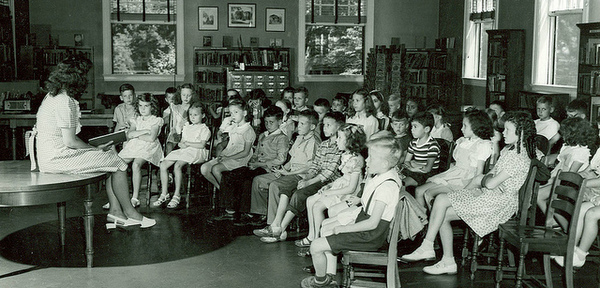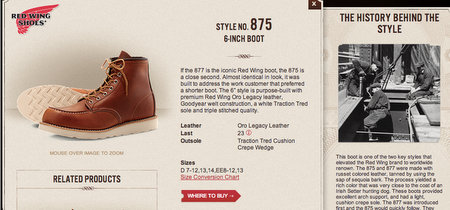You have fifteen minutes to evacuate your home. Quick: what three things do you grab?
Maybe… photos, that coffee mug your grandmother made when she was a teenager, the painting you and your husband bought on honeymoon in Bali?

Stories capture attention and engage–like one did in this library years ago.
Would you grab your 54” flat screen? The expensive wine in the cellar? Your light fixtures you just spent a bunch of money on? I doubt it, unless the wine was procured on a trip through Burgundy with someone special.
The items in the first group have meaning.The second group might have a higher cost, but they can be replaced – so they get left behind.
Objects with meaning have more value
This three-strand simulated pearl necklace sells on QVC for $116. The founder of this company saw that Jackie Onassis’ necklace was up for auction and she spent a great deal of money to purchase it. She then had an exact replica made modeled after the very necklace. It comes with a Certificate of Authenticity. The description reads “Model your style after one of the most fashionable females of our time.” It is one of the most popular items on QVC.
Meanwhile, I could buy a similar necklace for $40 at Macy’s. But what fun is that? If I can afford it, I’d much rather have the one that was made as an exact replica.
The value of stories
Joshua Glenn and Rob Walker set out to prove the point above in their Significant Objects experiment. They purchased $128 worth of trinkets at thrift stores and assigned each item to a writer who would then create a story around that item. They weren’t trying to mislead anyone – they phrased the stories as fictional, but created an emotional connection.
The items sold on ebay for $3,600. That’s a pretty big return on investment, simply by adding a story.
Uncovering emotional stories
Telling your “brand story” might sound like fluff, but giving your customers an emotional reason to buy your product or service can be big business. Emotion often trumps cold reason.
Uncovering your story is not always easy. It starts with some real “soul-searching.” Yes, brands can search their souls.
What does your audience care about? What drives them crazy? What makes them happy? What makes them cry with happiness? What are their biggest obstacles?
Then make the connection: this involves understanding at a deep level how the thing you provide makes the world a better place for your customers. “Our product or service” is the wrong answer. The right answer is the experience or the outcome.
How do they relate to the problem you solve?
Red Wing shoes appeals to the working man. “Work is our work. Work is our pride,” is prominently displayed on their home page. You can meet the team that crafts the boots and read the stories about the men who originally wore them in the early 1900s. Now, fashionistas pay top dollar at trendy shops to wear Red Wings paired with leggings and oversized Pendleton plaid shirts.

Red Wing hasn’t changed their story. They still target the working man or woman, but because of that story, they attract more people who want to be a part of it.
Regardless of your business, you have a story to tell, because you have an audience of customers that care about something. Want to live happily ever after? Connect those dots and weave that story throughout your brand.
For more marketing advice from Lisa Gerber, click here.
Image: North Carolina Digital Heritage Center (Creative Commons)![]()

